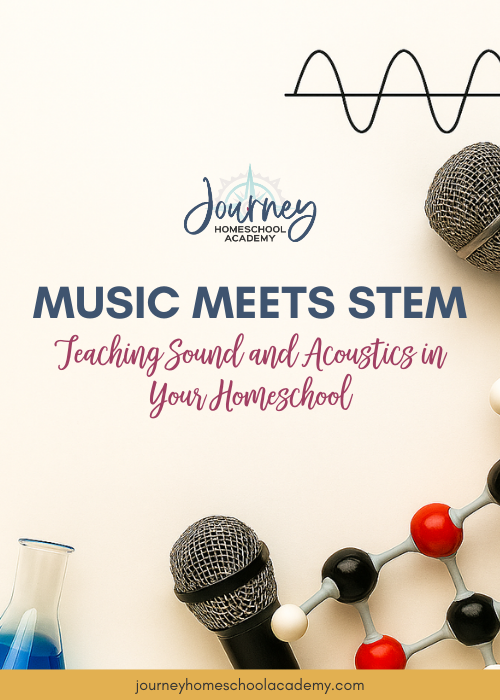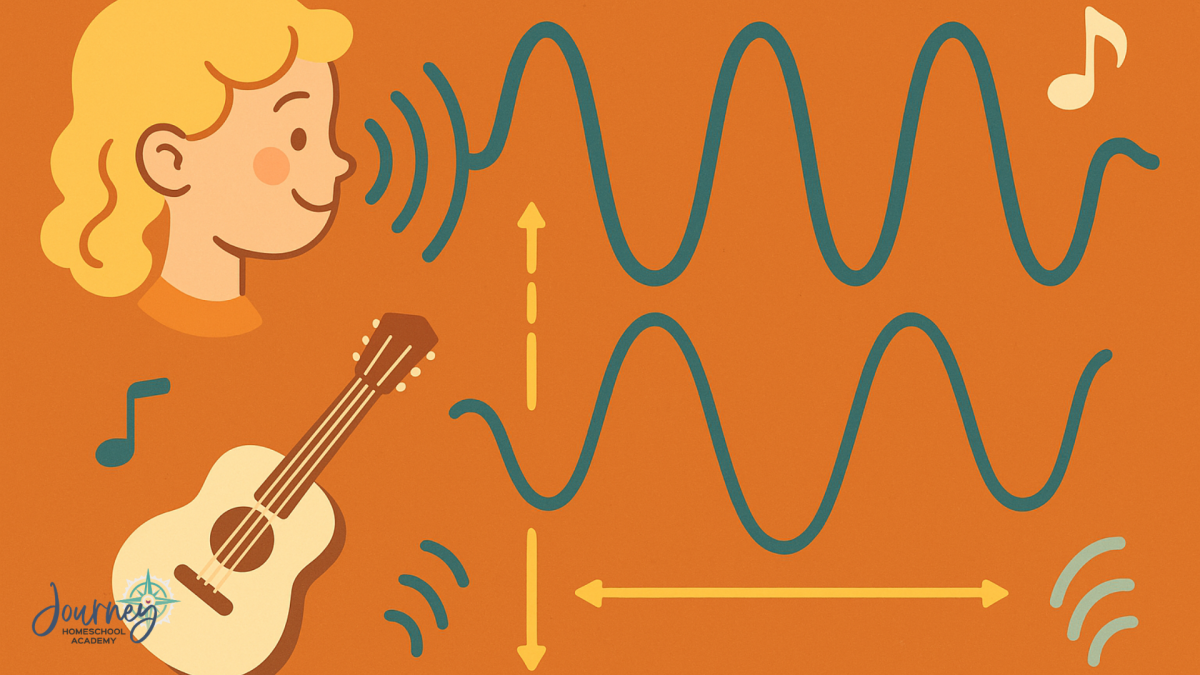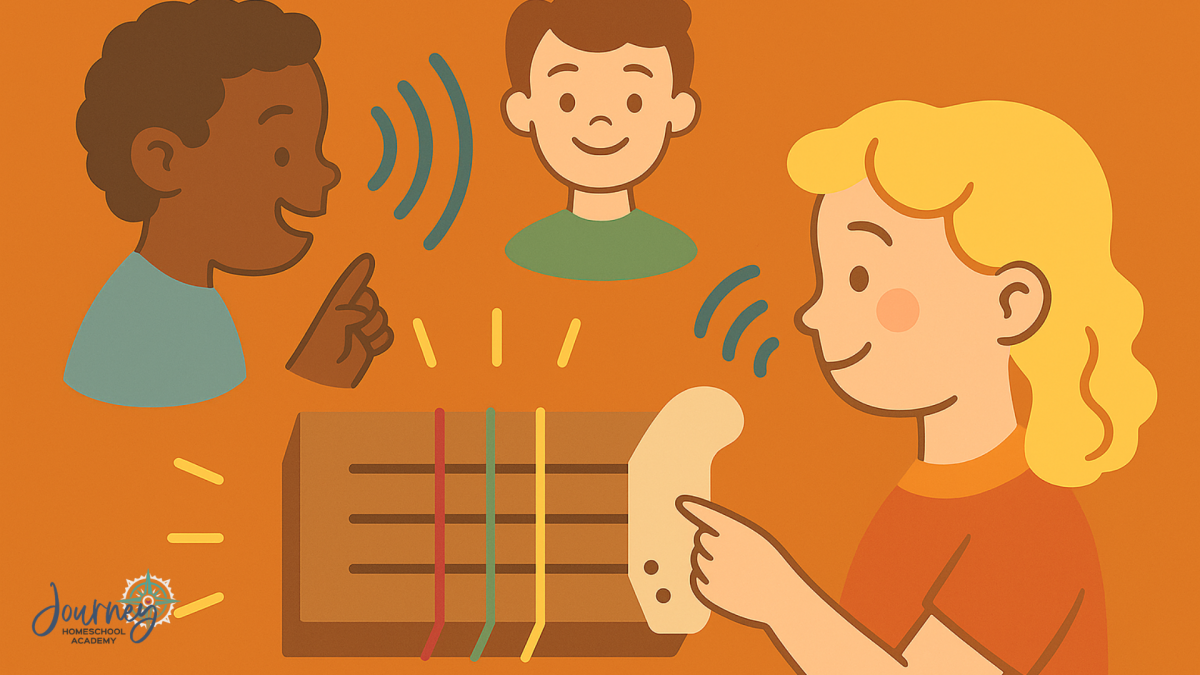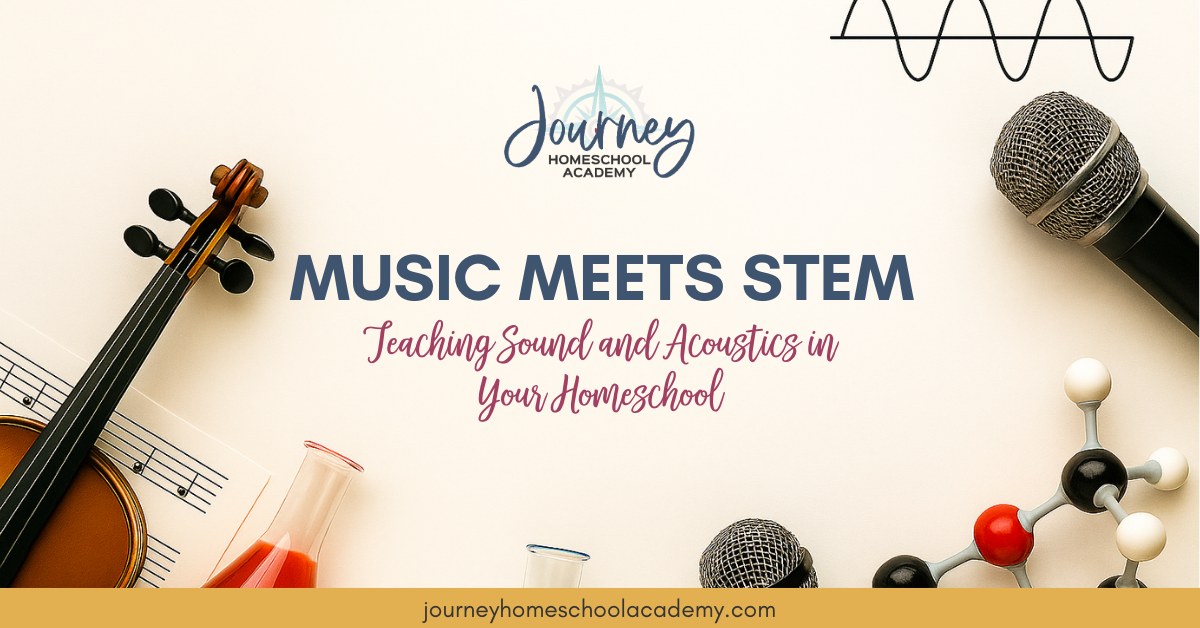Sound is everywhere. From the joyful notes of a hymn sung at church to the buzz of a bee in the garden, God’s creation is filled with vibrations that our ears and minds interpret as sound.
But here’s the big question: have you ever stopped to think about the science behind those sounds? As homeschoolers, we have a unique opportunity to turn everyday noises into exciting lessons that weave together science, math, music, and even theology.
Let’s take a journey into the science of sound and acoustics—and how you can bring this fascinating subject into your homeschool.
Music Meets STEM: Teaching Sound and Acoustics in Your Homeschool

What Is Sound?
At its simplest, sound is just vibrations traveling through matter. When a guitar string vibrates, it pushes the air molecules around it, and those vibrations travel in waves to your ears. Your eardrum vibrates in response, and—voilà—you hear music!
- Pitch is determined by the frequency of those vibrations (measured in Hertz, or cycles per second). High frequency = high pitch, low frequency = low pitch.
- Volume (or loudness) depends on amplitude—how big the vibrations are.
- Medium matters! Sound travels faster through solids and liquids than through air. (NASA on Sound in Space)
Fun homeschool example: clap your hands in the living room and then in the bathroom. Notice how the sound is different? That’s acoustics at work!

Acoustics in the Real World

Sound doesn’t just live in instruments—it’s everywhere in our world:
- Why does your voice echo in an empty gymnasium but sound flat in a carpeted room? That’s acoustics—sound bouncing off surfaces (or being absorbed by them).
- How do whales communicate across miles of ocean? Sound waves travel differently in water than in air.
- Entire careers are built on sound science: acoustic engineers design concert halls, sound technicians fine-tune worship services, and scientists study animal communication.
Want to explore this with your kids? Try using bird song apps for homeschool families to study how birds communicate through sound.
Simple Sound Experiments for Homeschoolers

You don’t need fancy lab equipment to explore sound. Try these simple, hands-on experiments:
- Rubber Band Guitar – Stretch rubber bands of different thicknesses across a box. Pluck them and notice how pitch changes with thickness and tension.
- Water Glass Xylophone – Fill glasses with different amounts of water. Tap them with a spoon and hear the pitch rise and fall as the water level changes.
- String Telephone – Connect two cups with a string. Talk into one cup while someone listens on the other end. Why does sound travel so well through the string?
Encourage your kids to make hypotheses, observe carefully, and record their results like real scientists.
Bringing Sound into Your Homeschool STEM
Studying sound naturally weaves together science, math, and the arts:
- Graph sound waves using free apps or online tools like Audacity.
- Use a decibel meter (many phones have apps) to measure sound levels in different environments.
- Compare hymns, bird songs, and household noises—what makes them different?
Learning about acoustics is a perfect example of cross-disciplinary homeschooling—where one lesson connects multiple subjects and highlights the unity of God’s creation.

Journey Homeschool Academy Courses That Explore Sound
If your students are fascinated by sound, Journey Homeschool Academy offers several courses that dive deeper:
- Physical Science Explored – Students explore energy, waves, and sound in a hands-on, approachable way.
- Discover Physics – A deeper dive into wave mechanics, sound, and acoustics, complete with labs and experiments.
- Experience Chemistry & Biology – Explore the molecular and cellular ways sound and vibration interact with creation.
Best of all, these courses are video-based and taught from a Christian worldview, so you don’t have to be the expert. You simply guide your child, while we bring the science to life.
Building Confidence in Science Education
Many parents worry they aren’t “science people.” But the truth is, you don’t need a physics degree to teach acoustics—you just need the right resources. With tools like Journey Homeschool Academy, you can give your children the joy of discovery without the stress of being the expert.
Sound is a reminder of God’s creativity. From the whisper of the wind to the beauty of music, acoustics is a homeschool science subject that can spark curiosity, connect to real life, and point your kids back to the Creator.
Final Encouragement
This week, try a sound experiment with your kids—maybe the rubber band guitar or water glass xylophone. Watch their eyes light up as they see (and hear!) science in action. And when you’re ready to go deeper, check out Journey Homeschool Academy’s science courses for a Christ-centered way to bring acoustics—and all of science—alive in your homeschool.

